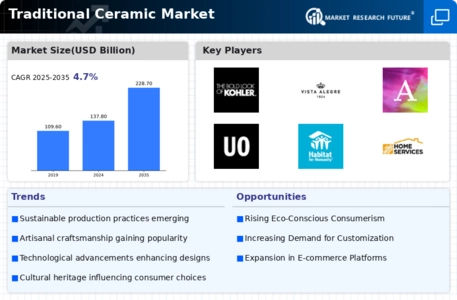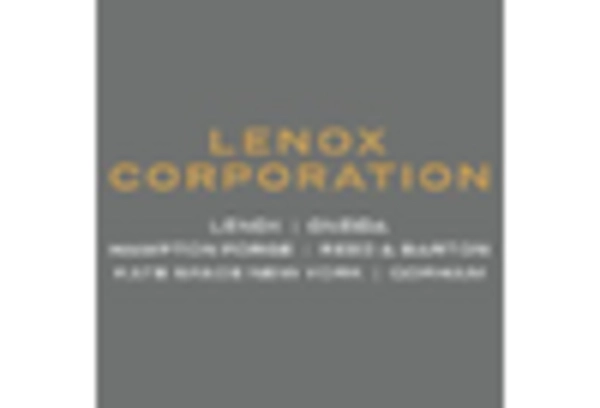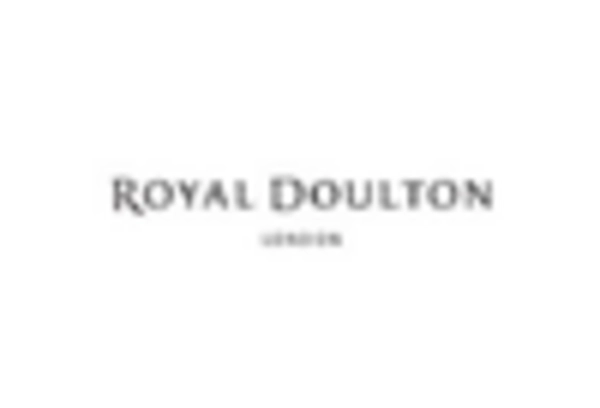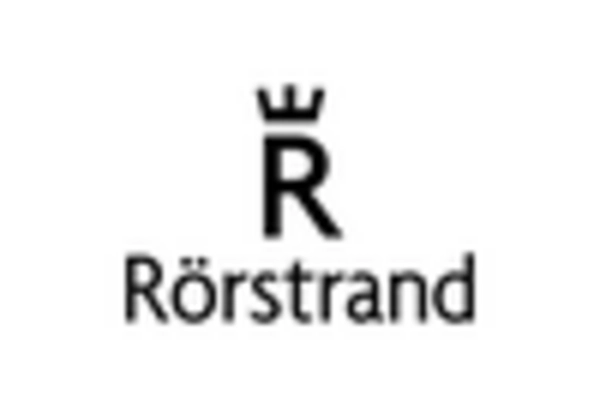Home Decor Trends
The evolving trends in home decor are significantly influencing the Traditional Ceramic Market. As consumers seek to personalize their living spaces, traditional ceramics are being embraced for their aesthetic appeal and cultural significance. Items such as decorative plates, vases, and tiles are increasingly featured in contemporary interior design, bridging the gap between tradition and modernity. Market analysis reveals that the home decor segment of traditional ceramics is experiencing a notable growth trajectory, with an increasing number of consumers incorporating these items into their homes. This trend not only enhances the visibility of traditional ceramics but also reinforces their relevance in today's design landscape.
Artisanal Craftsmanship Demand
The demand for artisanal craftsmanship is a driving force within the Traditional Ceramic Market. As mass-produced items become ubiquitous, consumers are increasingly drawn to unique, handcrafted products that reflect individuality and quality. This trend is particularly pronounced among younger demographics, who often prioritize authenticity and craftsmanship in their purchasing decisions. Data indicates that the market for artisanal ceramics has expanded significantly, with a marked increase in sales of handmade items. This shift not only supports artisans and small businesses but also enriches the Traditional Ceramic Market by fostering innovation and creativity in design and production.
Cultural Heritage Preservation
The Traditional Ceramic Market is experiencing a resurgence driven by a growing interest in cultural heritage preservation. As consumers increasingly seek authentic and artisanal products, traditional ceramics, which often embody historical craftsmanship, are gaining popularity. This trend is particularly evident in regions with rich ceramic traditions, where local artisans are revitalizing age-old techniques. According to recent data, the market for traditional ceramics has seen a compound annual growth rate of approximately 5% over the past few years, indicating a robust demand for these culturally significant items. This driver not only supports local economies but also fosters a sense of identity and continuity within communities, making it a pivotal aspect of the Traditional Ceramic Market.
Culinary Experiences and Gastronomy
The intersection of culinary experiences and gastronomy is emerging as a significant driver in the Traditional Ceramic Market. As the culinary world increasingly values presentation and authenticity, traditional ceramic tableware is gaining traction among chefs and food enthusiasts alike. The use of handcrafted ceramics in restaurants and home dining settings enhances the overall dining experience, making it more visually appealing. Recent trends indicate a growing preference for traditional ceramic dishes, which are often perceived as elevating the quality of food presentation. This culinary focus not only boosts the demand for traditional ceramics but also highlights their role in enhancing cultural dining experiences.
Sustainability and Eco-Friendliness
Sustainability is becoming a cornerstone of consumer preferences, significantly impacting the Traditional Ceramic Market. As environmental awareness rises, consumers are increasingly inclined to choose products that are eco-friendly and sustainably sourced. Traditional ceramics, often made from natural materials and employing low-impact production methods, align well with these values. Recent statistics suggest that the market for sustainable ceramics is expanding, with a notable increase in sales attributed to eco-conscious consumers. This shift towards sustainability not only enhances the appeal of traditional ceramics but also encourages manufacturers to adopt greener practices, thereby contributing to the overall growth of the Traditional Ceramic Market.


















Leave a Comment